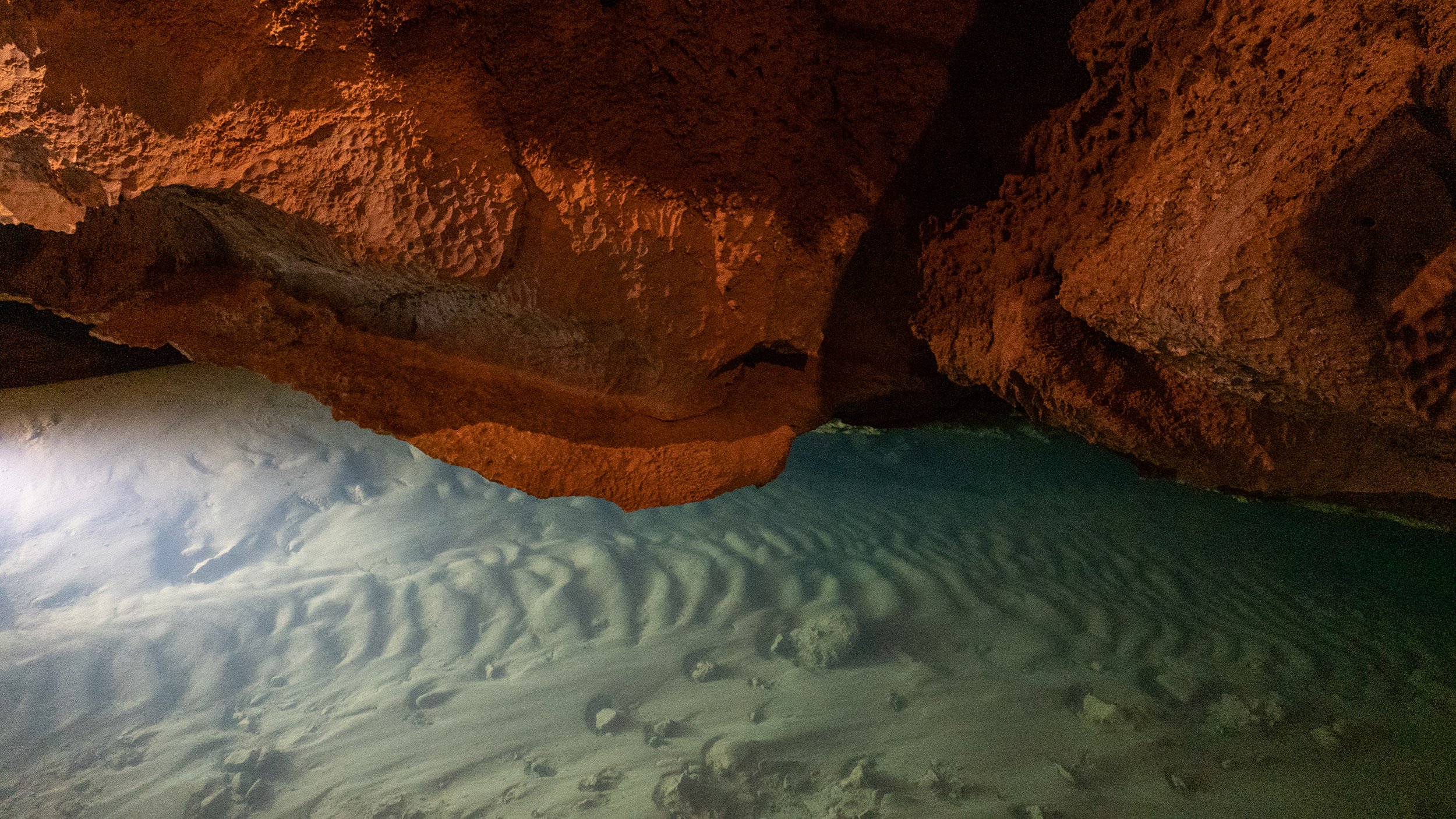
Healing Waters
As well as forming Caves, BOOMBI is also essential to Aboriginal Culture. No journey made in Australia’s harsh climate could stray far from water. Waterways were therefore of great importance and watersheds and mountains marked clan boundaries. Arrangements had to be made before members of one clan could visit another clan’s area.
JENOLAN caves are BINOOMEA
A water creature was at the heart of the original creation story of the Jenolan area. In the Dreamtime, Gurangatch, part eel, part fish, engaged in a deadly struggle with Mirragan, a native quoll. They ranged over the lands of the Gundungurra nation, and in their fight gouged out the Cox and Wollondilly Rivers. Mirragan pursued Gurangatch to both the Whambeyan (Wombeyen) Caves and ultimately to the Jenolan Caves. Here Gurangatch rested and licked his wounds to heal them. His blood can still be seen on the rock walls as you leave the grand arch. He lay regaining his strength where the Blue Lake is now located.
Because Jenolan is where Gurangatch rested, his peaceful thoughts have become part of the land. This is a peaceful place for all of us, but especially for NGOWAL. Flowing water represents women, and this is an area where woman’s food and medicine can be found.
Before Europeans came, the area where the Blue Lake now is, was a DUMBIDUMBI, fed by 4 rivers flowing through the mountain.
Passageways from the Grand Arch roadway once led to the lowest levels of the cave system, enabling Aboriginal people to enter the mountain and access the underground water. One of these passageways, now blocked, in the Grand Arch is believed to have once led to the Pool of Cerberus. At the junction of lake walk and Devil’s Coach House Cave, there are two saucer shaped depressions in the rock. These are the two chambers of the pool, the topmost one for resting, the lower for bathing, just like a plunge pool today!
For thousands of years, Aboriginal people from many Nations came to Jenolan Caves, to bathe in the pools of NADYUNG.
A visit to theses NADYUNG involved a long journey from homelands. Some walks took many days. In the summer months, the climate at Jenolan is cool. Whereas many lands, especially those higher up in the mountains, would be much hotter. The quiet serenity of this area aids recovery.
Gundungurra elder, Billy Lynch, recalled in the early years of the 20th century that, “The old natives knew the Caves”. They penetrated the caves as far as the subterranean water, carrying their sick to be bathed in this water, which they believed to have great curative powers. Sick people were carried there from considerable distances.
The water contains dissolved minerals that were thought to have healing properties. Aboriginal people drank the healing waters for stomach ailments. After bathing, skin complaints would disappear. But, introduced diseases like small pox and the common cold couldn’t be cured by the waters. Many Aboriginal people died from such diseases, because they had no natural resistance to them.
Traditionally, the Gundugurra people thought that not only did the cave water have healing properties, but that the crystals themselves possessed healing powers, especially for spiritual well being - much the same as is believed today by many non Aboriginal people. Individual crystal formations, able to be easily carried, were used as sacred objects in men-only ceremonies – ‘men’s business’.
Gurangatch the Eel


